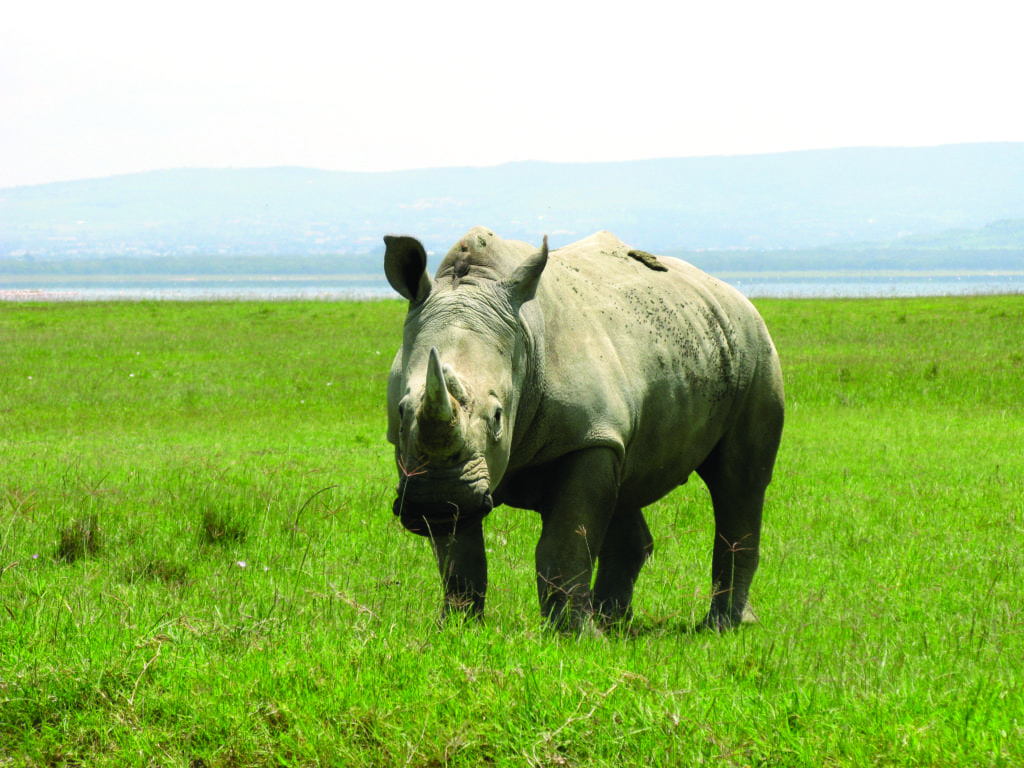Rhinoceros (November 16)


The third largest land animal today is the rhinoceros – often weighing over 6000 pounds (as much as three compact cars)! Pound per pound, it is also the fastest land animal – capable of running almost 30 mph and knocking over a SUV loaded with gawking tourists! Yet, this mighty beast is dependent on the smallest of creatures for its survival.
The rhino is a herbivore designed to eat plants that many animals cannot. Rhinos survive in harsh environments filled with low nutrient (even poisonous) plants that deer and other herbivores cannot digest. What is the rhino’s secret to survival? It has an integrated system of bacteria and specialized organs that allow it to thrive.
The microbes that process a rhino’s food live in the caecum (a special section of the intestine downstream of the small intestine), and they break down the cellulose materials that the rhino eats – turning them into sugars, vitamin B, and amino acids that the rhino cannot directly obtain from plants. But this symbiotic relationship between the biggest and smallest of organisms is even more amazing. The transformation of nutrients takes place downstream of the rhino’s small intestine, but nutrients the rhino needs must be absorbed upstream (in the small intestine). So how does the rhino survive? Powerful muscular contractions in the rhino’s digestive tract move things in both directions in the rhino, either driving nutrients upstream for absorption by his body or driving waste downstream for elimination. The unique design of such a complex system testifies to the genius of its Creator.
Psalm 71:8
KJV: Let my mouth be filled with thy praise and with thy honour all the day.
NIV: My mouth is filled with your praise, declaring your splendor all day long.
Reference
Hennigan, Tom. October 2015. “Low-Octane Tanks of the African Plains”. Answers 10(4) 24-26.
